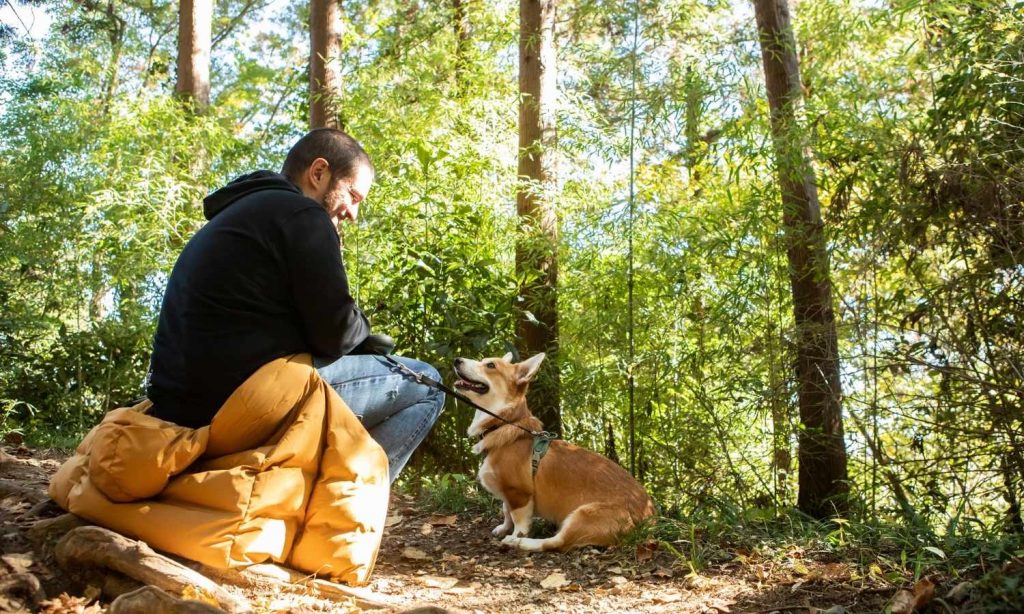The Latch has partnered with Suncorp Bank to deliver the sustainability content you need when figuring out what you can do to drive real climate action.
Many of us live in urban cities where it may not be very common to have a green space right next to our office or apartment building. Canberra leads the list of green cities globally with 98% of green spaces in the city. Cities with abundant green spaces have been proven to have an immense impact on humans, and are also a shining beacon of hope for climate action.
But what exactly is a green space? Green spaces are parks, trails, forests, grass patches, community gardens, and cemeteries. Green spaces positively impact societal health, inclusion, cohesion, and environmental wellbeing.
The creation, management, and regular use of green spaces are intertwined. If people don’t frequent public green spaces, the spaces may be taken for other development uses, and similar spaces may be seen as unwarranted. To understand how we can contribute to the upkeep of green spaces, we must first understand why they are important.
Free Space for All
Unlike gated attractions or amusement parks, public gardens are free for all regardless of one’s class, race, or gender. The green space is an equaliser for play, sports, relaxation, and gatherings for anyone and everyone.

While the upper echelons of society might easily access a gym or a pilates class, a nature park doesn’t have a monthly fee, which makes it the most affordable and accessible option.
Studies have shown that open, free, green spaces have a correlation between areas with lower crime rates. Although this research is still in its infancy, scientists are studying the patterns that green spaces have on the public and potential criminals. It is suggested that the parks allow for the congregation, celebration, and a more ‘open surveillance’ that deters crime.
Related: What Is Eco-Tourism and Why Is It Important for Our Planet’s Future? We Explain
Related: Yes, It Is Possible to Travel Sustainably and on a Budget — Here’s How
Related: The Way We Travel Is Changing — Here’s What Travel Looks Like in a Post-Pandemic World
Nature Heals and Connects
Remember 2020? When we could only go to parks within our nearest 5km radius? After a long day of zoom screens, many of us clambered to the nearest park to lie down. Nature is a wonderful way to reset ourselves. Exposure to sunlight increases the body’s production of Vitamin D, and serotonin which is a natural mood booster. Listening to sounds of birds chirping, and trees rustling is said to foster focus and enhance memory performance.
There is also no age limit on who can access nature. From young children to grandparents, anyone can visit a park and benefit from its surroundings. This is one way of building intergenerational connections and friendships across cultures.
While the importance of green spaces is clear, we still do need to play an active role in the upkeep of these spaces for all. Here are two simple and straightforward means to do this.
Take Walks and Take Charge
Using green spaces is an easy, no-brainer way of showing your town council that these areas matter. Additionally, you can go one step further by ensuring that these areas are kept clean.
This means ensuring that we do not trash or leave animal poo so that it is habitable for the next person coming to the park. Although it might be convenient to depend on the regular cleaners to do this job, as citizens, we can do our equal part in making sure we clean after ourselves and our pets. If possible, we could also remind fellow park-goers to do the same in a gentle but firm way.
You could also consider volunteering for causes like beach or park clean-ups to make consistent efforts to keep them maintained.
Make Your Voice Count
Space is scarce in the 21st century. There is always an upcoming project that demands the use of open land. When there is a new building or development, make your voice count by expressing your interest in the preservation of green spaces. If there has to be a portion of the green spaces that have to sacrifice, then suggest alternative ways of incorporating nature in the building, through indoor installations or rooftop gardens.

At your office, write to your HR department to suggest organising a team bonding session by going for a nature trail, or maybe, start by simply encouraging your colleagues to have lunch at a park every last Friday of the month.
If you have children, perhaps, you could tag along as a parent volunteer for your child’s excursion to a forest. In the case that the school doesn’t have such ideas, you could slowly feed information on ‘forest school’ or similar pedagogies to encourage the teachers to take on these activities.
While combating climate action might sometimes feel like a very cumbersome challenge, the truth is, climate action starts with very simple, actions; like using the parks and making sure our voices are heard about the parks and future parks we care about.
Read more stories from The Latch and subscribe to our email newsletter.







